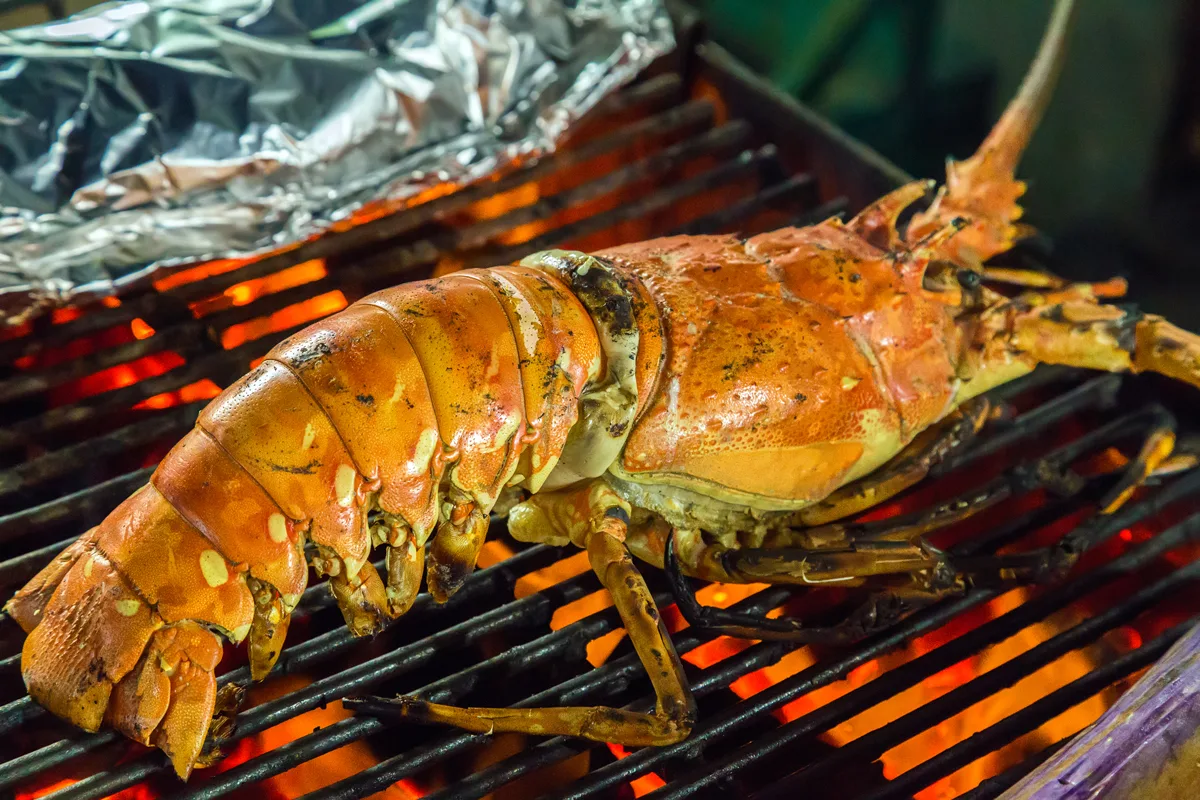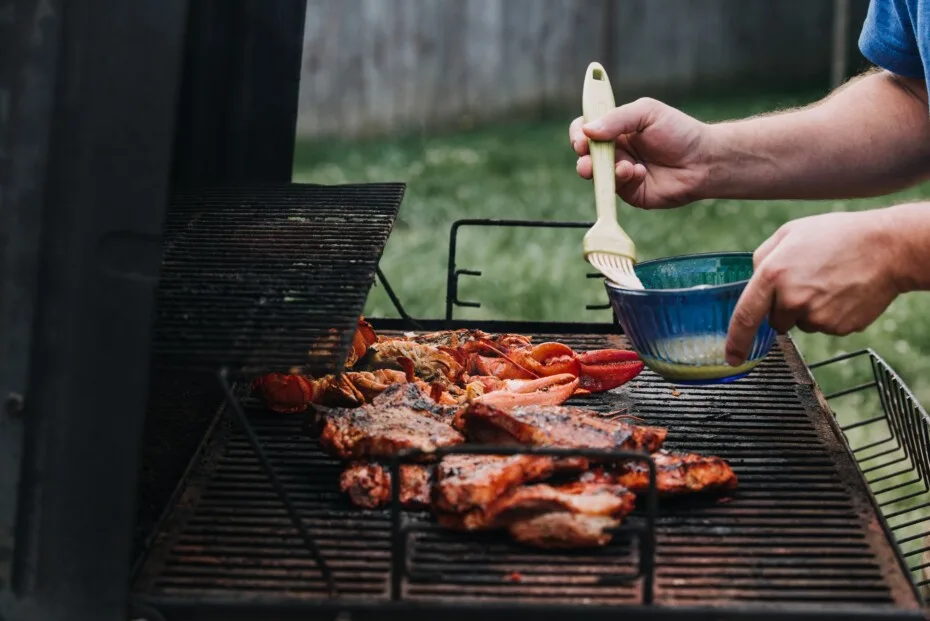It’s a rare occasion when one person cannot finish cooked lobster.
If you’ve made too much lobster for your gathering and do not want to waste your lobster, you can save your leftover lobster and reheat them on another day.
Like crab legs and crawfish, you must use specific techniques to reheat lobster properly.
Contents
Can You Reheat Lobster Safely?
Yes, it is safe to reheat lobster. However, you must use the correct storage and reheating methods.
Any food allowed to sit out at room temperature for more than two hours must be discarded.
Bacteria can multiply rapidly when food is left to sit out too long, so you must store your leftovers immediately after you finish eating.
To store leftover lobster, place it into a shallow container. Alternatively, you can also wrap your leftover lobster tightly with plastic wrap or aluminum foil and store it in the fridge.
Once stored in the fridge, cooked lobster has a 3-4 days shelf life.
The thing you must consider when reheating lobster is the reheating stage.
If your leftover food is not heated to the recommended temperature or using a food-safe reheating method, it may become contaminated with bacteria.
Cooking the lobster to the proper temperature the first time takes care of the food being contaminated by bacteria.
Nevertheless, to inhibit the spread of bacteria and possibly contracting a foodborne illness, reheat it to a temperature at or above 140°F.

How to Reheat Lobster
No one likes chewy, tough lobster. So, if you want to restore lobster to its succulent state, you must learn how to reheat it the right way.
How to Reheat Lobster in the Microwave
The microwave has garnered a bad reputation for heating food unevenly and pulling the moisture out of foods.
In addition to this, cold spots in the lobster can conceal bacteria which can potentially make you ill.
However, the microwave can be used to reheat lobster safely and still preserve the lobster’s texture of flavor.
Simply wrap the lobster with a damp paper towel and arrange them on a microwave-safe dish.
Heat the lobster on high in the microwave for 1-2 minutes until the lobster is thoroughly heated and has a temperature of 140°F.
If you are reheating lobster meat without the shell, wrap it with a damp paper towel.
Heat the lobster meat in the microwave for 30 seconds to 1 minute until it is thoroughly heated and has a temperature of 140°F.
How to Reheat Lobster by Steaming Them
Steaming is one of the best methods you can use to reheat lobster. To reheat your lobster via steaming, add 1/2-1 cup of water to the bottom of a large pot.
You can add a teaspoon of salt along with spices, garlic, or crab boil to the water to enhance the flavor of the lobster.
Set the pot over medium-high heat and allow it to come to a boil.
Place the steamer’s basket on top of the pot and arrange the lobster’s flesh side down in the basket.
Do not stack the lobsters in the steamer basket, as it will cause the food to reheat unevenly.
Cover the pot and heat the lobster for 3-5 minutes until it is thoroughly heated.
If the lobsters are not heated, return them to the steamer’s basket and cook them for an additional 1-2 minutes until hot.
The same rules apply if you are reheating lobster meat that is not attached to the shell. However, it would only need to be reheated for 3-4 minutes.
How to Reheat Lobster in the Oven
Even though microwaving and steaming are quicker methods of reheating lobster, the oven is the best way to reheat food.
Yes, it takes longer to reheat lobster in the oven, but it is the best way to preserve the lobster’s flavor and texture.
To reheat leftover lobster in the microwave, heat the oven to 350°F. Arrange the lobster onto aluminum foil, then add a few teaspoons of butter to the exposed meat.
Wrap the lobsters in foil, place them onto a cookie sheet and cook them for 5-10 minutes until they are thoroughly heated and have a temperature of 140°F.
If you are reheating lobster meat that is not attached to the shell, place a few pieces of meat onto a sheet of foil.
Add a few teaspoons of butter as well as seasonings such as old bay and wrap it to form a foil packet.
Place the lobster onto a cookie sheet and cook it for 5-10 minutes they are until thoroughly heated.
How to Reheat Lobster Meat in a Frying Pan?
A skillet is also a great way to reheat lobster. However, you will not be able to reheat the entire lobster in the pan.
This method works best with reheating lobster meat.
Place a teaspoon of butter into a frying pan, then add the lobster meat to the pan.
Place the lobster over medium-high heat and cook it for 5 minutes until it is heated.
How to Reheat Lobster on the Grill?
Yes, you can use a natural gas grill for cooking foods such as BBQ salmon and BBQ burgers. However, you can use a kamado grill to reheat lobster.
Heat your portable pellet grill to high. If you are reheating lobster meat, brush it with olive oil and lightly sprinkle it with salt and pepper.
Grill the lobster for 1-2 minutes per side until it is heated.
On the other hand, if you are reheating lobster tails, place them flesh side up for 5-8 minutes until they are thoroughly heated.
Do not flip the meat over, as it may damage the appearance of the lobster since the meat can stick to the grill cooking grates.
How to Reheat Lobster in a Toaster Oven
Yes, you can reheat lobster tails in a toaster oven. It is very similar to reheating lobster tails in the oven.
Simply arrange the lobster tails onto a cookie sheet and heat your toaster to 400°F.
Reheat the lobster tails for 10 minutes until they are thoroughly heated.
Final Thoughts
When cooked properly, lobster is tender and firm and has a delicate succulent sweet flavor. However, most people avoid reheating lobster because they end up with tough, chewy meat.
But the truth is, leftover lobster can be just as delicious as when it was first cooked as long as you know how to reheat it the way.
You might also be interested in:
- How To Reheat Crab Legs
- How To Reheat Salmon
- How To Reheat Crab Cakes
- How To Reheat Crawfish
- How To Reheat Shrimp

I have been smoking and grilling meat from an early age and enjoy sharing my knowledge and expertise through the hundreds of articles I have written about BBQ. I hope to make everyone’s BBQ journey that little bit easier.

